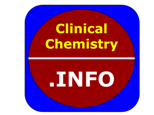Clin Chem. 2025 Mar 19:hvaf021. doi: 10.1093/clinchem/hvaf021. Online ahead of print.
ABSTRACT
BACKGROUND: Urea is elevated in chronic kidney disease (CKD) and end-stage renal disease (ESRD), and promotes the carbamylation of proteins, including human albumin, on multiple lysine side chains. Higher proportions of carbamylated albumin (C-Alb) have been associated with increased mortality risk in patients with ESRD. Whether C-Alb predicts mortality in patients with no or mild impairment of kidney function is unknown.
METHODS: We measured C-Alb in 3197 participants of the Ludwigshafen Risk and Cardiovascular Health (LURIC) study who had been referred to coronary angiography and followed-up for 10 years. Association of baseline C-Alb with all-cause and cause-specific mortality was investigated using Cox proportional hazards regression.
RESULTS: Higher quartiles of C-Alb were associated with a significantly increased risk of death from any cause, with hazard ratios (HRs, 95%CI) of 1.53 (1.26-1.85) and 2.52 (2.11-3.01) in the third and fourth quartiles, respectively. After adjustment for cardiovascular (CV) risk factors, including estimate glomerular filtration rate (eGFR), the association with mortality was attenuated with a HR of 1.25 (1.02-1.53) for the fourth quartile as compared to the first quartile. We observed the strongest association with death due to congestive heart failure (HF) with a HR of 7.19 (4.57-11.3) and 3.99 (2.40-6.63) per 1-unit increase of log-transformed C-Alb in unadjusted and multivariate adjusted analyses, respectively.
CONCLUSIONS: We observed a strong association of C-Alb with CV risk in patients with no or mild CKD. This association was independent of traditional CV risk factors including eGFR and particularly strong regarding death due to congestive HF.
PMID:40105890 | DOI:10.1093/clinchem/hvaf021
